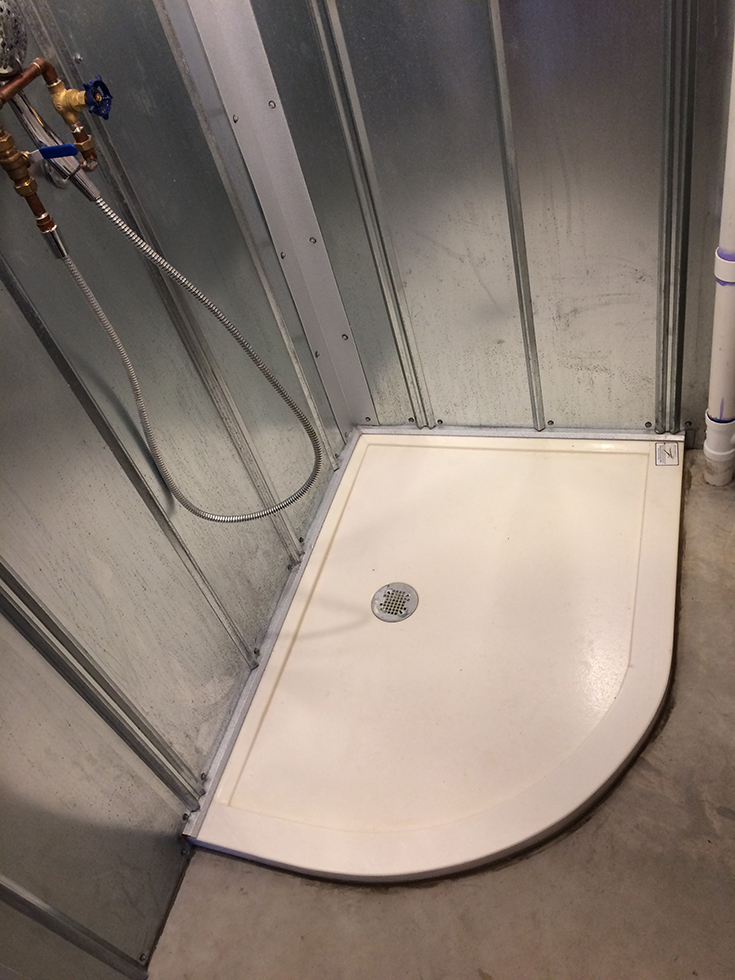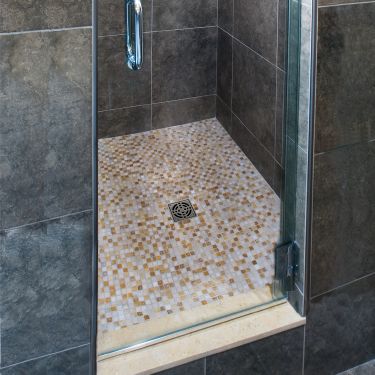In this article in the next paragraph you can locate more very good content relating to How to Install a Shower Drain in a Basement.

Updating a washroom is just one of the a lot more prominent house enhancement jobs. Managing the plumbing for draining your shower can be extremely basic unless you overdo it.
Handling Your Own Shower Drain Setup Project
You can physically construct an enthusiast for your brand-new shower, however you truly need to think about it. Do you really want to get involved in the issues of getting the sloping appropriate, in addition to making sure every facet of it is water-proof? As well as I imply every aspect! It is a lot easier to merely get a pre-cast collection agency online or at your local Lowes, Residence Depot or hardware shop. Structure one might seem like a great suggestion, however you will most likely feel in different ways after a couple of hours.
No matter exactly how you tackle obtaining a frying pan, you ought to strive to utilize one that has the drain situated in the exact same place as the initial pan. Moving the drainpipe pipes can be a job, especially if the builder made use of a distinct framework structure. If you are established to relocate the drainpipe, you are mosting likely to have to cut down the pipe or extend it, which may indicate ripping up big chunks of the flooring. Put another way, you are mosting likely to be looking at a several weekend project.
Thinking we have our drain aligned, the real attach is fairly basic. The drainage pipe need to be dealing with upright up to the collection agency. It will certainly frequently look like a "U", which implies it works as a cleanout to keep unpleasant scents from coming back up from the drain. To attach the drain, you are going to develop a water tight connection in between a drainpipe cap on the top of the pan as well as the water drainage pipeline. Systems vary, yet you are generally mosting likely to do this by placing a coupling piece on the top of the water drainage pipeline. This is then covered with gaskets as well as essentially screwed right into the drain cap. The drain cap must serve as a locknut, to wit, it screws straight onto the coupling.
The challenging part of this process is obtaining your drainpipe cap to match a watertight setting in the pan. This is achieved by withdrawing the drainpipe cap as soon as you are sure whatever meshes. Then, you placed plumbings putty around the bottom of the cap and afterwards screw it back on. The putty must create a limited seal between the cap and the shower pan, which keeps water from dripping under it as well as into the mounting under the shower.
Clearly, washroom showers come in a wide variety of designs nowadays. If you acquire an enthusiast, they generally featured plumbing guidelines or the shop can keep in mind anything uncommon you must understand. It seems complex, but is generally pretty straight forward. Have fun!
Whether you are a bathtub or shower individual, lots of people try to find shower just choices when purchasing a home. This simple reality suggests greater than a few homeowners invest a weekend break updating or setting up showers in their bathrooms. The good news is for you, it is a rather basic process.
A collector or frying pan describes the horizontal surface area situated at the bottom of the shower. The collector commonly includes a non-slip surface a little banked in the direction of the center or wherever the drainpipe is located. Combined with 3 to four inch wall surfaces around the side, the goal of your shower drain plumbing is to obtain the water to flow to and also down the tubes.
Tips for Installing a Shower Drain Assembly
Renovating a bathroom can be exciting as well as fulfilling if you’re tackling the job DIY-style. After you cross off the bigger decisions such as tile style, paint colors, and fixtures, you’ll need to finalize smaller details – such as the shower drain. In this article, we’re sharing some tips for selecting and installing the right drain assembly for your updated shower.
What is a shower drain assembly?
Shower bases or pans typically only come with a pre-drilled drain hole. Since the pan slopes toward the drain, you should consider the placement – left, center, or right – when designing your shower. You’ll need to purchase and install a shower drain assembly that connects the shower pan to the drain pipe underneath the shower. There are a few types of assemblies, which will be covered below.
Size of a shower drain
When it comes to installing drains, size matters. The recommended pipe size for a shower drain is 2 inches, whereas most tubs use 1.5-inch pipes. Why the difference?
Shower pans are shallower than tubs, so there’s a higher risk for overflow. So, the larger pipe allows for quicker draining. If you are replacing an old tub with a newer stand-up shower, you will need to make additional plumbing adjustments to accommodate the 2-inch pipe.
Types of shower drain assemblies
There are three common types of shower drain assemblies: compression shower drain, solvent-glue shower drain, and tile shower drain. The layout, design, and materials of your shower can determine which type of shower drain assembly will work best.
Compression shower drain
This type of assembly attaches to the drain pipe with compression washers and nuts. The drain fitting is typically installed into the base, and then the base is installed into the bathroom floor. This makes compression-style drains easier to install than other options, particularly if you don’t have easy access from the floor under the shower base. Drains are available in a wide range of materials such as PVC (polyvinyl chloride), ABS (Acrylonitrile Butadiene Styrene), and brass, and can be used for acrylic, fiberglass, and steel shower bases.
Solvent-glued shower drain
Made of either polyvinyl or ABS, this type of shower drain is sealed to the drain pipe with solvent glue and silicone. Since you’ll be working underneath the drain pan, we only recommend using this type of drain if you have access under the shower, such as from a basement or crawlspace. It’s also important that you match the type of plastic of the drain with the drainpipe. If you take these precautions, you can install a solvent-glued drain assembly with acrylic, fiberglass, and steel shower bases.
Tile shower drain –
Drain assemblies for custom tile showers feature a waterproof membrane liner placed between two flanges. The tile is installed on top of the liner, collecting any water that seeps through the porous grout. A metal strainer is installed in line with the tile over the drain.
https://www.epshawaii.com/blog/tips-for-installing-a-shower-drain-assembly/

I am just very eager about How to Choose the Best Drain for Your Shower and I am hoping you appreciated our blog posting. Sharing is caring. Helping others is fun. I take joy in reading our article about How to Install a Shower Drain.